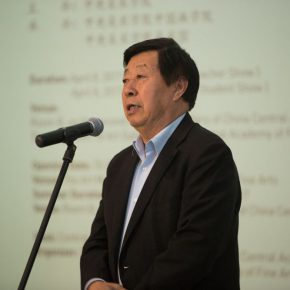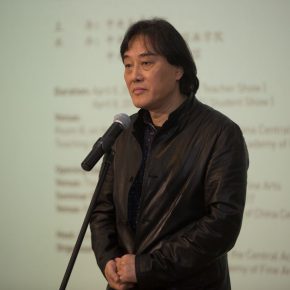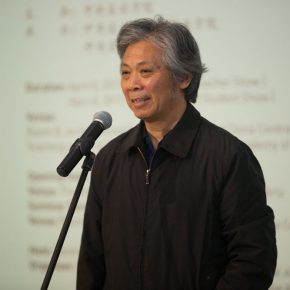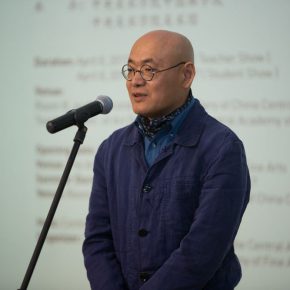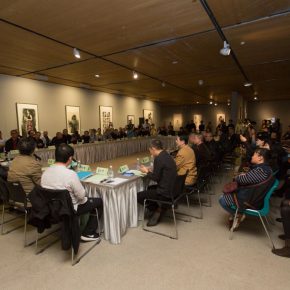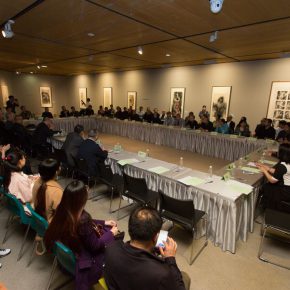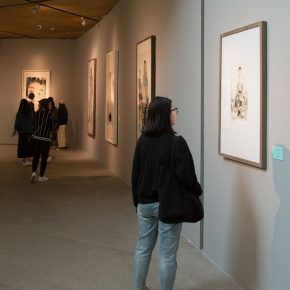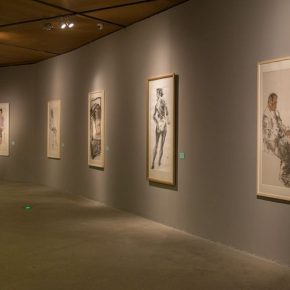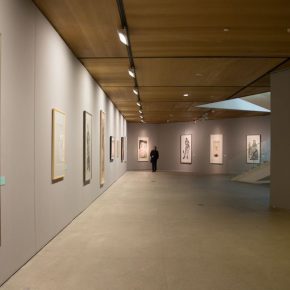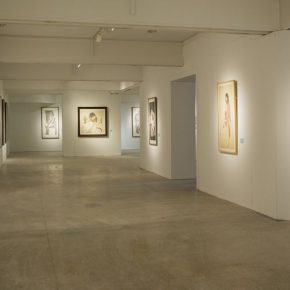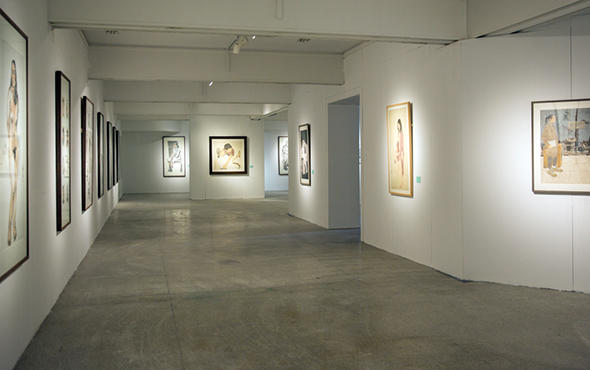
On April 18, 2017, “For Chinese Painting: The Seminar of National Academies on Figure Painting & the Exhibition of Professors and Students” opened in CAFA Art Museum, the exhibition was organized by CAFA with President of CAFA Fan Di’an serving as the producer of the exhibition, a total of 28 colleges and universities of art were invited to participate in the exhibition, to feature nearly 200 pieces created by 107 in-service teachers and 90 students, so it can be described as a concentrated presentation on the present situation of the teaching of Chinese figure painting and the creative situation of the academy. On the opening day, an open teaching seminar was held at the exhibition site to discuss the exhibition and the related topics in the present higher education of Chinese figure painting. The exhibition comprehensively opened on April 8, and the seminar also promoted the whole activity to another academic level.
Figure painting is the most ancient type of Chinese painting, and the creative method that perfectly embodies the artistic spirit of the era. Producer of the exhibition and President of CAFA Fan Di’an addressed the opening ceremony and said that, in the past 100 years, the development of Chinese figure painting embodied the cultural ideal of the new era, reflecting the social changes of modern China which has actively demonstrated the history of the ethnic struggle and sought liberation and independence, while it also showcases the spiritual attitude of the great revival of the nation. How to start from the present situation of social development to observe, shape and perform for people in the academy education, how to express the fate and spirit of the image, which is an academic proposition of practical significance, and this exhibition is an opportunity to guide the academic community to focus on the historical significance and contemporary value of the figure painting.
Liu Dawei, Chairman of China Artists Association started from the history of art to briefly research the open development of figure painting in different historical periods, the introduction of Buddhist frescoes, the combination of Northern nomadic culture in the Wei, Jin, Northern and Southern Dynasties, and the cultivation culture in the Central Plains, the Silk Road opened and Gandhara Art was introduced, as well as the infiltration of the Western scientific spirit since the May Fourth Movement that profoundly influenced the creation of Chinese figure painting. Since the new period, the figure painting has been changed in the aspects of creative ideas, forms and material handling, while the exhibition also prompts the clues of the evolution and the status quo. Wang Zan, Vice President of China Academy of Art addressed the opening ceremony and directly faced the key problems of present figure painting, for example, the relationship between the sketching of shapes and figure painting, the relationship between brush and ink, as well as the problem of the fusion of brush and ink, sketching and creation. As for where the current figure painting went, Wang Zan suggested “reducing”, inheriting the spirit of brush and ink of traditional figure painting, to subtract the extra elements attached to it as much as possible.
Since the Wei and Jin dynasties, Chinese figure painting has established a set of mature aesthetic standards, focused on “conveying the spirit with images”, “Spirit Resonance”, and also improving the creative techniques of “18 Traces”, to pursue the “Bone Method” which blended the interest in calligraphy into the creation. The creation of the figure painting reached a peak in the Tang and Song dynasties, and it gradually declined along with the rise of literati painting, since the modern “Eastward transmission of Western Sciences”, the techniques of sketching and creation have been brought into the figure painting, to change the old stylized appearance. Xu Beihong advocated realistic painting, taking sketching as the basis of shaping to determine the teaching norms of Chinese figure painting, and Jiang Zhaohe further improved and formed the “System of Xu Beihong and Jiang Zhaohe”, and it became the foundation of the teaching of Chinese institutions after the exploration of ancient ancestors. Along with the development of the times, the creation of figure painting also faces a new social and cultural context, which is not only the development of human figure painting, but also the new perspective of shaping and the opportunity of expression, sketching is one of the important foundations for the creation of figure painting. Helping to enhance the vitality and the sense of presence in teaching, the relationship and transformation between creation and sketching, the research on the expressive style of the sketching of figure painting in the era of image information.
After the opening ceremony of the exhibition, the experts of the creative and theoretical circles from all over the country held an academic discussion at the exhibition site, with some essential topics including: the thoughts on the present sketching and creative teaching of figure painting, the implementation and expression of the freehand spirit of Chinese painting in the teaching of figure painting, the art of ink painting in the era of information and visualization, the role of figure painting in the modern process of Chinese painting and the contemporary attributes, as well as future orientation, the diversified exploration on the sketching of meticulous figures in the contemporary context of painting. It attracted many visitors and the students from the School of Chinese Painting came to listen to the study.
CAFA once unfolded the professional academic seminar and exhibition for landscapes, flowers and birds, themed on “For Chinese Painting”. The holding of the activities that systematically deepens the innovative thinking and outlook of the disciplines of Chinese painting, playing a role in the promotion that strengthens academic exchange and disciplinary advantage. In line with the exhibition, the book entitled “For Chinese Painting – Sketches and Teaching of National Academies of Figure Painting” would be published at the same time. The student show is on show at the teaching exhibition hall till April 23, and the teacher show is on display on the second floor of CAFA Art Museum till May 3.
Text by Zhang Wenzhi, translated by Chen Peihua and edited by Sue/CAFA ART INFO
Photo by Yang Yanyuan/CAFA ART INFO



